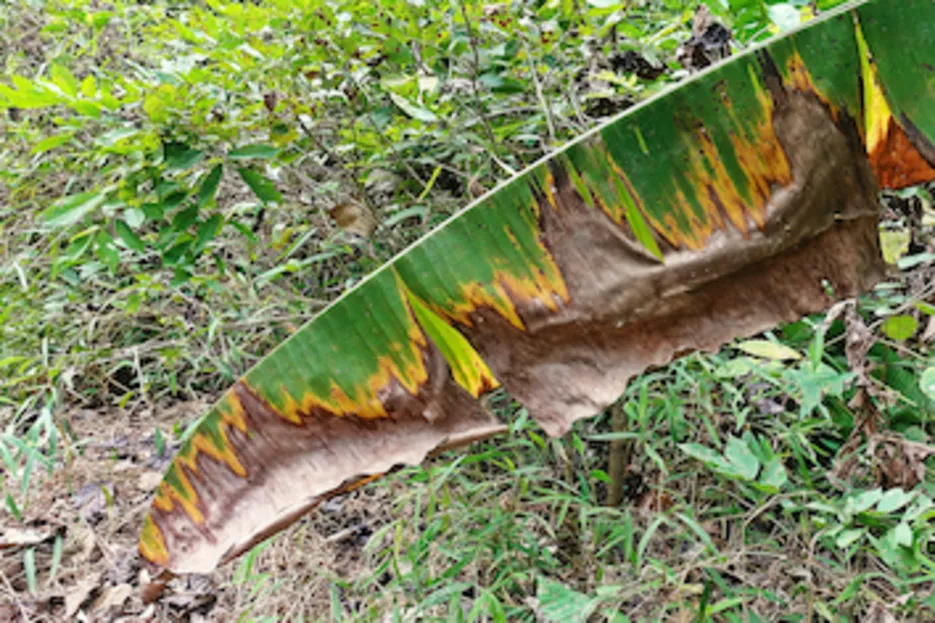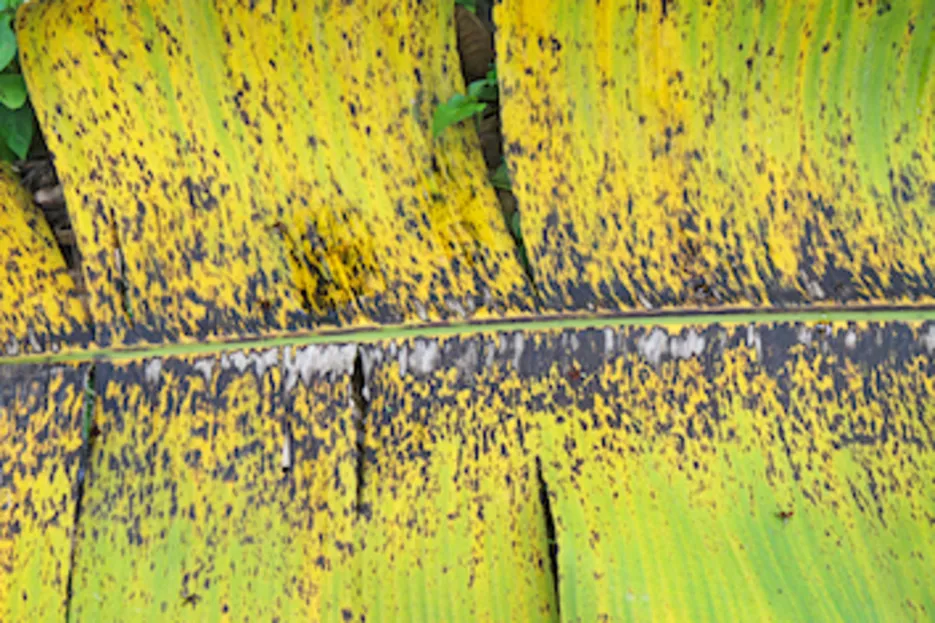 ਵਾਪਸ
ਵਾਪਸ

Banana is the second most important fruit crop in India next to mango. Its year-round availability, affordability, varietal range, taste, nutritive and medicinal value makes it the favorite fruit among all classes of people. This crop also has good export potential. Following practices can be followed for higher yields of Banana. Nutritional management of Banana crops is very important and farmers have to carefully observe deficiency symptoms and apply required fertilizers.
Nutrient deficiency Management :
Nutrient deficiency Management :

Major Nutrients :
Major Nutrients :
Nitrogen: In soils with low organic matter content nutrients especially Nitrogen is not available to the crop. Generally, if N deficiency is observed older leaves become yellow. Please apply neem coated urea to give additional nitrogen to the crop. For each plant, 15 grams of urea has to be applied at every 15days interval up to 45 days after transplanting by drip . Later on please apply 20 to 30 grams of urea every 15 days till the crop reaches 150 days.
Phosphorous: This deficiency occurs in acidic soils and alkaline conditions. Stems become thin and lean and the plant grows very slowly and short in height. Petiole portions break away. Apply 300 grams Single superphosphate immediately after planting along with farmyard manure. Superphosphate also has sulfur and calcium essential for plants. If the deficiency symptoms are observed in later stages foliar fertilizers with high P are recommended.
Potassium: Potassium deficiency also occurs in problematic soils and soils with less potassium. If this element is deficient, discoloration starts from leaf tips as yellow-orange zones and mostly limited to the leaf margins. Apply Muriate of Potash 80 grams per plant 4 times by drip in 40 days time period to the correct dose to withstand the deficiency symptoms. Farmers can also apply Sulphate of Potash, the dose to be followed is 5 grams in one-liter water.



Micronutrient :
Micronutrient :
In many cases, micronutrient deficiency symptoms may occur at different stages. It is recommended to take up petiole analysis for identifying the right cause. Magnesium: For Magnesium deficiency Key identification feature is petioles become blue and purple color, hence it is also called blue disease. Apply Magnesium sulfate to manage this deficiency.
Zinc: If Zinc deficiency is observed the potion between the veins becomes yellow and to overcome Zinc deficiency apply 10 grams of Zinc Sulphate to each plant or spray Zinc sulfate at the dose of 2 grams in one liter of water 2-3 times.
Iron: If the Iron deficiency is there young leaves become pale green and later yellow. But the midrib remains green in colour. To overcome this deficiency spray Iron sulfate by mixing 5 grams in 1 liter of water along with 1 % urea solution.
Calcium: Calcium and Boron deficiency also develops on younger leaves and can be confused easily. If calcium deficiency is there the leaf becomes like a spike. Apply YaraLiva Nitrabor (14.6% N: 17.1% Ca: 0.25% B ) to manage the deficiency of Calcium deficiency.
Boron: Boron deficient plants show reduced leaf area, curling, and deformation of leaves. For managing Boron deficiency spray apply Borax salt 25 grams per plant or spray 2 grams Borax in 1litre of water.


Disease management:
Disease management:
Disease management is the most difficult part of Banana cultivation, To prevent the occurrence of diseases always grow resistant varieties and take the tissue culture plants from reliable sources.
Sigatoka Leaf spot: Early symptoms appear on the third or fourth leaf from the top on young crops. Small spindle-shaped spots on foliage with the greyish center and yellowish halo running parallel to veins. If the fruit is nearing maturity some bananas appear undersized and their flesh develops a pinkish color and stores poorly. Spray Nativo(Tebuconazole 50% + Trifloxystrobin 25% WG) 120 grams per acre to control this disease.
Anthracnose: the disease attacks banana plants at all stages of growth. The disease attacks the flowers, skin, and banana tips . The symptoms appear as large brown patches covered with a crimson growth of the fungus. The disease fruit turns black and the fruit is shriveled. Use recommended fungicides to control this disease at the early stages.


Bacterial soft rot disease: This disease is more pronounced on young suckers leading to rotting and emitting of foul odor. Roting of the collar region is the commonest symptom followed by epinasty of leaves, which dry out suddenly. For control of bacterial soft rot use chemicals like Copper oxychloride 50% WP ( Example Blitox or Blue Copper) along with bactericides for complete drenching of suckers before planting.
Tip rot disease: The pathogen affects mature and even the immature fruits. This causes blackening of the fruit tip shrinkage and folding of the tissues. For control of tip rot spray Mancozeb 75% WP ( Example Dithane M-45, Indofil M-45) at the recommended dose.
Bunchy Top: Prominent dark green streaks on the petioles and midrib along the leaf veins. Marginal chlorosis and curling of leaves. Petiole fails to elongate. Leaves are reduced in size, chlorotic, stand upright and become brittle and crowd at the top(Bunchy top) and show dark green streaks with hook shape near the midrib. Flowers display mottled and streaked discoloration. This is a viral disease hence there is no control measure. Please destroy the affected plants and prevent the spread of this disease by vectors.
_54887_1677489863.webp)

Banana should be harvested at the physiological maturity stage for better post-harvest quality. Please avoid using pesticides before harvesting stage and check the labels for the correct dosage.
Thank you for reading this article, we hope you clicked on the ♡ icon to like the article and also do share it with your friends and family now!
Thank you for reading this article, we hope you clicked on the ♡ icon to like the article and also do share it with your friends and family now!








